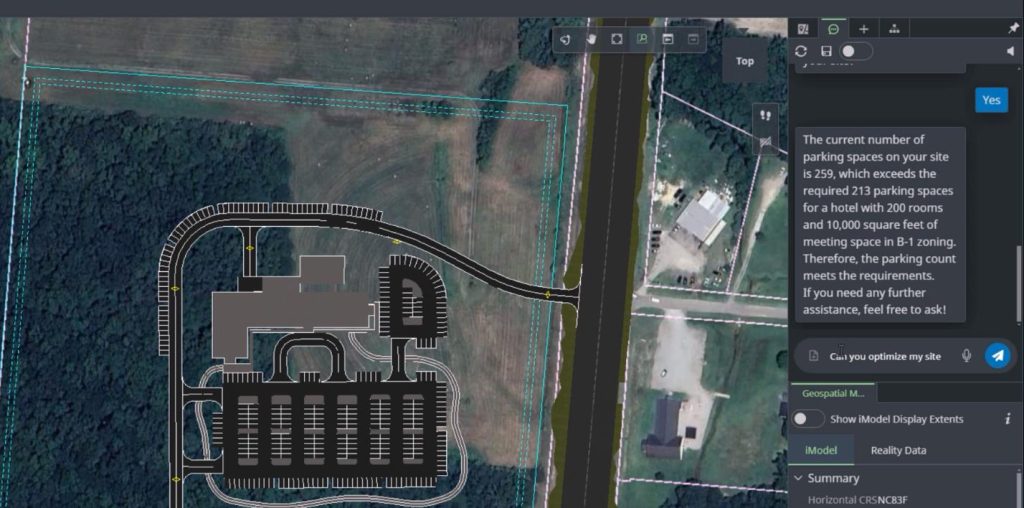The digital twin offers big opportunities for the construction industry, and it will change how contractors construct cities, buildings, homes, and infrastructure for many years to come.
To help, the ASCE (American Society of Civil Engineers) has released a report, Digital Twins in Construction and the Built Environment. The objective is to provide practical implementation strategies, while addressing the challenges of moving to an increasingly digital built environment. It digs into predictive maintenance, examples such as digital twin-enabled health monitoring of construction workers, and it also explores how BIM (building information modeling) can be integrated with digital twins for enhanced interoperability.
This is something I saw many times over at Bentley Systems’ Year in Infrastructure 2024 (YII2024) last week in Vancouver, Canada, and there were some very big takeaways I would like to share today.
Two Big Challenges
Multiple conversations at the event centered on two big challenges facing the construction industry, and Nicholas Cumins, CEO, Bentley Systems, summed it up best.
“The way they framed the conversation this morning was around these two challenges we see in the construction sector,” he says. “The first one being there is just so much demand for better, more resilient infrastructure, and on the other hand there is just not enough resources to go and execute on that demand. The second challenge is there is so much data available.”
He goes on to say solving the first challenge is by solving the second challenge: Simply, meaning let’s tackle all the data being created to equip engineers so they can make better, timelier, and even, faster decisions.
Cumins suggests, you need to:
- Make sure the data is open and accessible.
- Understand what the data means.
- Mix together all data sources.
Julien Moutte, CTO, Bentley Systems, echoed this sentiment in a candid conversation I had with him. “The obvious issue we have been discussing multiple times this morning is the shortage of resources. And Nicolas mentioned the shortage of insights,” he says. “We have a lack of engineers, we have a lack of insights, but what we have plenty of is data.”
“We believe this challenge is something where we can act upon,” Moutte adds. “We can do something about this. We can help make the data more leverageable, more beneficial to the users by letting it flow with this openness approach, which we have described, and then we can bring all the engineering expertise and capabilities of the Bentley portfolio to bear on that specific data, to extract all the insights that will help those engineers be more productive.”
This is where some of the big announcements Bentley made at the event enter the conversation. At the annual event, the company unveiled its vision for open-data ecosystems to advance infrastructure engineering. In addition to its Bentley Open Applications for infrastructure modeling and simulation, which allow users to edit models from other vendors, Bentley has developed in the last decade a schema specifically for infrastructure. Bentley’s Base Infrastructure Schema structures and organizes data so it can be queried, analyzed, and reused across multiple platforms, enabling infrastructure professionals and organizations to fully leverage the value of their data.
The company also announced a digital twin-native product, OpenSite+, built with Bentley’s iTwin platform, which offers new generative AI capabilities for civil site design, including a design copilot, site layout optimizations, and automated drawing production that will drive new levels of productivity and accuracy. We also see Bentley Systems partnering with Google to bring geospatial context and capabilities to infrastructure.

A Focus on Embodied Carbon
Another significant announcement and focus of conversation was on sustainability, as the company is aiming to make carbon impact analysis a systematic part of the design process for new and existing infrastructure assets. Ultimately, this will help simplify embodied carbon reporting with added 3D visualizations.
“The value here is not just understanding what the embodied carbon is in the project but understanding it at the right time—early on in the design process, while decisions are still able to be made, while alternatives can be explored easily, and we can minimize that impact,” says Mike Campbell, chief product officer, Bentley Systems.
The openness can also provide great value when we are talking about sustainability, as evidenced by my conversation with Moutte.
“I think the openness will make it easier for other partners to come and help them leverage the existing information they have to unlock those sustainability goals. The owners and the operators will see great value in this landscape open approach. When they have this open data flowing around, then the value of creating more sustainable designs will be obvious for everyone.”
And the operations phase of the infrastructure lifecycle is something Bentley Systems is going to pay even greater attention to, as Cumins articulated to me. “We see that as a huge growth opportunity for us going forward. Some say that 80% of the whole lifetime cost (are) in the assets and operations phase. And, yet it is what 10% of our business.” All in all, there is a big growth and opportunity for diversification for Bentley Systems in this area.

As we move forward into a new era of innovation, we must consider how digital twins will help us move toward sustainable and energy-efficient building management.
Want to tweet about this article? Use hashtags #construction #IoT #sustainability #AI #5G #cloud #edge #futureofwork #infrastructure


